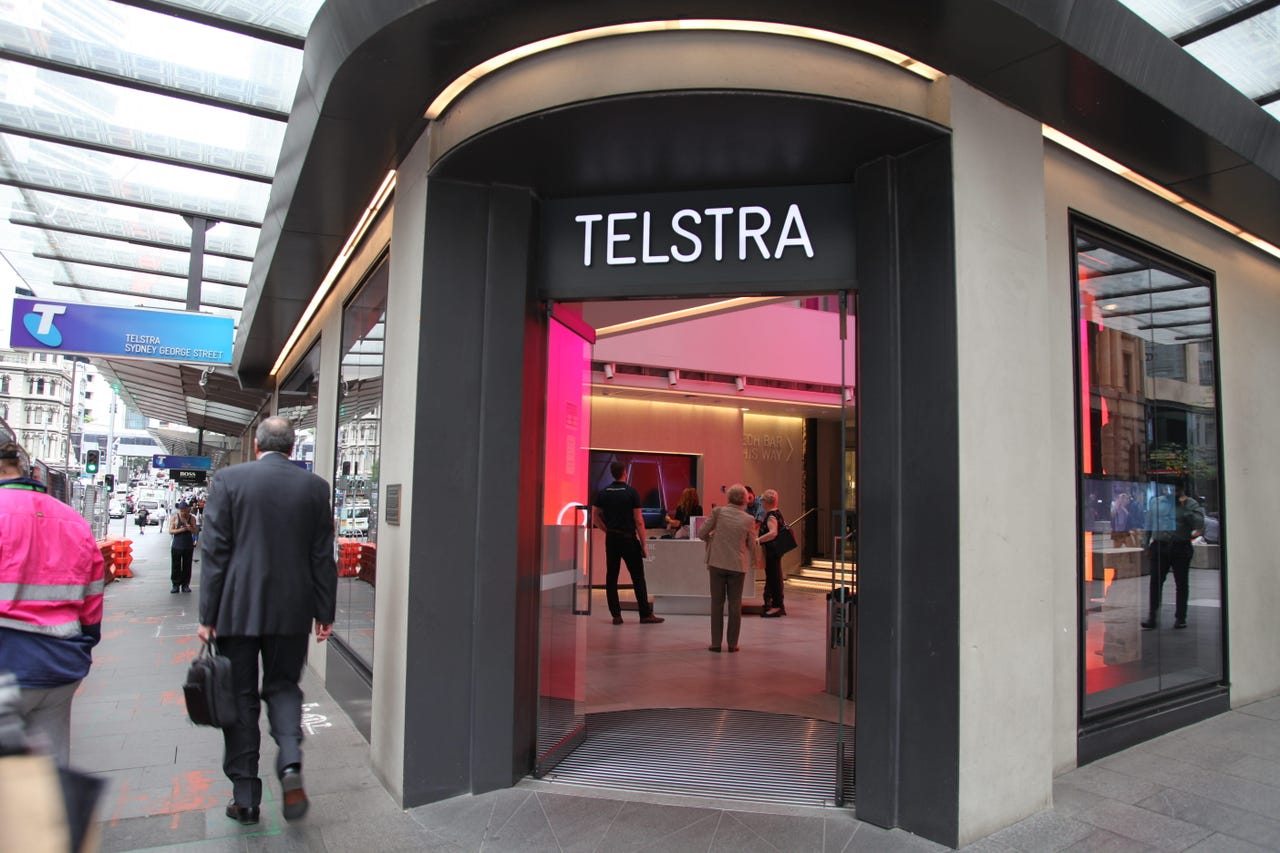Telstra sees profit plunge 40% for full year

Telstra has once again pinned the National Broadband Network (NBN) as the cause of a drop in profitability, claiming it is responsible for AU$600 million in negative earnings before interest, tax, depreciation, and amortisation (EBITDA).
In its results released on Thursday, Telstra said the cost to it from the NBN was now AU$1.7 billion in total, and that it has only seen half of the impact.
Overall for the company, revenue was down 3.6% to AU$27.8 billion compared to last year, EBITDA shrunk 21.7% to AU$8 billion, and net profit was cut by 40% to AU$2.1 billion.
Excluding costs from job cutting, Telstra said its EBITDA was down 11.4% to AU$9.4 billion.
"While the reported financial trends in FY19 were challenging, underlying trends are expected to improve over the course of FY20," the company said.
Broken down by division, Telstra's infrastructure arm InfraCo recorded AU$4.95 billion in revenue, a drop of AU$489 million, and EBITDA of AU$3.2 billion, down AU$163 million. Mobile grew revenue by 1.6% to AU$10.5 million, while EBITDA fell 8.7% to AU$3.58 billion.
Fixed-line saw revenue drop by 9.4% to AU$5.2 billion, and EBITDA fall by AU$500 million to AU$790 million. Data and IP had a 7.7% revenue drop to AU$2.4 billion, while EBITDA shrank 9% to AU$1.49 billion. Network services reported a 4% revenue drop to AU$3.48 billion while EBITDA fell 9.3% to AU$331 million.
The telco's global connectivity business experienced a 8.3% increase in revenue to AU$1.7 billion, and a AU$37 million increase in revenue to AU$330 million.
Telstra is forecasting revenue of AU$25.7 billion to AU$27.7 billion for next year, with EBITDA between AU$7.3 billion to AU$7.8 billion, restructuring costs of AU$300 million, and NBN one-off payments of between AU$1.6 billion to AU$2 billion, with the government-owned network to cut Telstra's EBITDA by between AU$800 million to AU$1 billion.
"We have made good progress on our commitment to remove hierarchies and silos and have redesigned our organisation from the ground up. We have already removed three management layers and are on track to reduce up to four management layers in the organisation," Telstra CEO Andy Penn said.
"Around 75% of the net 8,000 direct workforce role reductions we announced as part of our T22 strategy have now been identified. We have also made progress creating 1,500 new roles in areas like cybersecurity and software engineering."
Total restructuring costs for the year totalled AU$800 million.
See also: Telstra2022: Key takeaways from Telstra's new strategy
Over recent weeks, NBN and Telstra have engaged in a round of finger pointing over which company is responsible for money disappearing from which company's balance sheet.
In July, NBN struck out at Telstra's complaints that the connectivity virtual circuit (CVC) charge that NBN puts on bandwidth needed to be scrapped and wholesale prices to be cut by AU$20.
Penn said at the time it was unprofitable for retailers to resell the NBN at current prices.
"An industry where wholesale prices result in zero margins for the downstream retail providers is unsustainable," Penn said.
"It will result in higher retail prices, reduced competition and retail providers looking for ways to bypass the NBN altogether -- which is bad for customers and bad for the industry."
NBN CEO Stephen Rue hit back describing the wholesale price debate as "the industry gnashing about NBN Co's pricing model".
Rue said it should be remembered that NBN is serving the entire country, and it is not just about capital costs, but also the ongoing costs required to keep it running.
"Let's not forget that the sum of all NBN Co payments to Telstra was around AU$2 billion this year," Rue said.
"Our Corporate Plan points to a continuing payment to Telstra for access to ducts, dark fibre and facilities of AU$1 billion annually from FY21, representing 20% of forecast revenues, and continuing for decades after the build is completed.
"This has an obvious impact on wholesale prices."
In explaining the results on Thursday, Penn said the NBN payments do not leave the company better off, saying Telstra's results prove this point, and rejected calls that the telco was the reason behind high wholesale prices.
"These payments to Telstra have actually helped keep the cost of the NBN down," Penn said.
"Without access to our very extensive network -- all the exchanges, fibre, ducts, pits and pipes -- NBN Co would have had to build this infrastructure from scratch at a higher cost and longer build time."
Telstra said it had reached an agreement to sell three of its data centres in Europe and Asia for AU$160 million to private equity group I-Squared Capital, the owners of Hong Kong telco Hutchison. The deal is expected to be completed in the first half of fiscal year 2020, and will see Telstra make AU$110 million on the sale.
In terms of customers, the telco added 378,000 postpaid services in the year to June 30, with its total customers now sitting at 8.2 million. Total wholesale mobile services is now over 1.2 million thanks to virtual operators adding 230,000 services this year.
The telco added 659,000 NBN customers during the year.
RELATED COVERAGE
Telstra outage takes down ATMs and Eftpos
Cash is king when Australia is lacking in Eftpos.
Telstra questions whether metadata restrictions are working as intended
Freeloading agencies skirting Australia's metadata restrictions often do not understand, or adequately protect requested metadata, the telco says.
Ericsson and Telstra make standalone 5G call
First call in Australia made over actual 5G.
NBN points to Telstra taking 20% of its revenue in wholesale price debate
After receiving AU$2 billion this year, Telstra is forecast to receive AU$1 billion annually from fiscal year 2021 well into the distant future.
Telstra ditches unlimited data in mobile plan shake-up
Unlimited data axed as telco switches to monthly commitments for connectivity.
